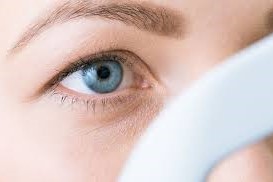Life through a lens
Tinted or polarised? Mirror or photochromic? Sunnies aren’t one size fits all, you need to make sure your patient has the right tools for the job.
Upselling sunglasses has never been trickier, but relying on style alone won’t help you get your patient across the line. What they need is good quality information about what sunglasses can do to improve their health and their vision.
“According to the Vision 2020 Australia key findings 2017, only 62% of Australians and Kiwis wear sunglasses,” says Mark Gaunt from Zeiss. “Also, 9%* of consumers think their clear lenses offer UV protection – in reality most products offer none at all.”
The optometrist has a key role to play in making sure their customer gets the right lenses, says Gaunt – but in order to do that, you need to know what you are selling.
Basic tints
Tinted optical lenses have been around since the late 18th Century, but it was only in the 20th Century that we really began to understand the science behind them. UV light can be split into three different waves. UVC, or light under 280 nanometres in length, is harmless as hardly any reaches the earth’s surface. UVB is up to 380 nanometres, which was the old standard for UV lens protection. UVA, or 380 to 400 nanometres in length, is the most harmful, but it is only recently that NZ ISO standards have required sunglasses to block out UV400.
“Wearing a tinted lens without UV400 protection can actually be more dangerous than not wearing sunglasses,” says Gaunt. “The darker the tint the bigger your pupil dilates, and so the more UVA is being let in and reaching your retina.”
Gaunt says it’s imperative that your customer understand the need for UV400 protection.
Chris Aldous from Essilor says that a tinted lens is the best recommendation for a patient on a budget looking for a good all round lens – but he notes that there is plenty of diversity within the category.
“There are different colours of tints, and different densities as well,” says Aldous. “If you’ve got someone outdoors a lot you can tint down to 85%. That gives them a dark lens. That goes right up to a fashion tint, just a light colour across the lens.”
The tints are about comfort and diminishing bright sunlight, and finding a tint that matches the colour of your chosen frame.
Polarised lenses
“Incredibly, the first polarised lenses were invented in 1909, and were available commercially by 1929,” says Gaunt. The technology has come on a long way, but the principle is still the same. “It’s like a set of venetian blinds, tipped at an angle so not all the light comes in,” he says. “Polarised lenses block out reflected light, or glare.”
Hugely popular among sports people, polarised lenses are known for their clarity, reducing blue light scatter that can cause blurring in your vision.
“For example, if you’re looking at a pond it takes the glare off the top of the water and you can see into it – a fisherman can see the fish,” says Donald Crichton, VP of the International Opticians’ Association, president of ADONZ and a sales consultant for Hoya. “I’d recommend polarised lenses for driving, especially in New Zealand. If it’s been raining hard and the sun comes out you get massive amounts of glare coming off the road. This is where polarised lenses are great.”
Polarised lenses are also good for general cycling, jogging, boating and for people with light sensitivity. If you’re older, then your eyes may not be as tolerant of UV glare so again, polarised lenses would be helpful. While polarised lenses have always blocked out UVA light, there is no particular health benefit to them, and they’re available for all types of prescription up to around a 1.67 index.
“They’re not for everyone though,” says Crichton. “If you’re doing a really specific task, then tinted lenses may work best.”
Crichton also says motorcyclists may find spotting dips and bumps in the road difficult because of the contrast between light and shade combined with the polarising effect when moving your head at speed.
Gaunt notes that understanding your patient and what they need their sunglasses for is essential to prescribing the right product.
“Pilots, for example, can’t wear polarised lenses as they can’t differentiate between land and water with them on,” he says. “If you use LCD screens or displays, then polarised lenses are also not recommended. Some European cars have LCD dashboards, and if your patient were to get behind the wheel and put polarised sunglasses on, then the whole dash could disappear.”
While Gaunt is reassuring about the strength of polarised lens material, Crichton says there are some types of frames that could put the lenses under strain.
“I wouldn’t recommend them for rimless or semi-rimless frames,” says Crichton. “As they’re effectively a thin polarising film sandwiched between two lenses laminated together, there is a small chance they could split in the wrong type of frame fitting.”
Photochromic
“Photochromic lenses would be recommended for people who move inside and outside a lot, such as delivery drivers,” Crichton says, noting that it can be cumbersome to carry more than one pair of prescription glasses.
“It gives the patient the opportunity to have a clear lens indoors and a lens that darkens when they’re outdoors,” says Aldous. “They’re getting the benefit of two types of wearing activity.”
There are also different depths of tint in the photochromic range, and different levels of functionality. “You can have photochromic lenses that start virtually clear and darken down to 85% for example,” says Aldous. “Or you could start with a 12% tint that darkens down.”
You also get different colours of tint – Essilor offer seven different colours across their transitions range, and they also offer a self-polarising photochromic lens.
“It’s also important to consider the performance of the lens through the change process,” says Aldous. “You want consistency of colour across all exposures.”
Gaunt feels that photochromic lenses have limitations that your patient needs to understand. “Most people want sunglasses for driving, but when you’re in your car your windscreen absorbs 70% of UV so the lenses don’t fully activate,” he says. “They can also activate in very cold weather, which could be frustrating.”
Gaunt also says it’s important to explain the level of responsiveness. Some photochromic lenses can take 90 seconds for the tint to dissipate once you move inside which could put some users off.
Ultimately, it is vital for any optometrist or dispensing optician to have a good understanding of their patient’s lifestyle before recommending the right lens.
“What is available on the market now is so diverse, fitting the patient’s needs is complex,” says Aldous. “As a professional it’s important to understand why a patient wants that lens and what it will be used for, because they all perform in different ways.”
Mirror mirror
You can get a mirror lens coating on lots of different sunwear products, but they have no real health or visual benefits in most situations – it’s more about fashion. The exception is snow sports, where a polarised lens may not work well in low light, but the reflective properties of a mirror lens could perform better.
*ZEISS external wearer trial with 106 spectacle lens wearers and 7 eye care professionals, 2018
























